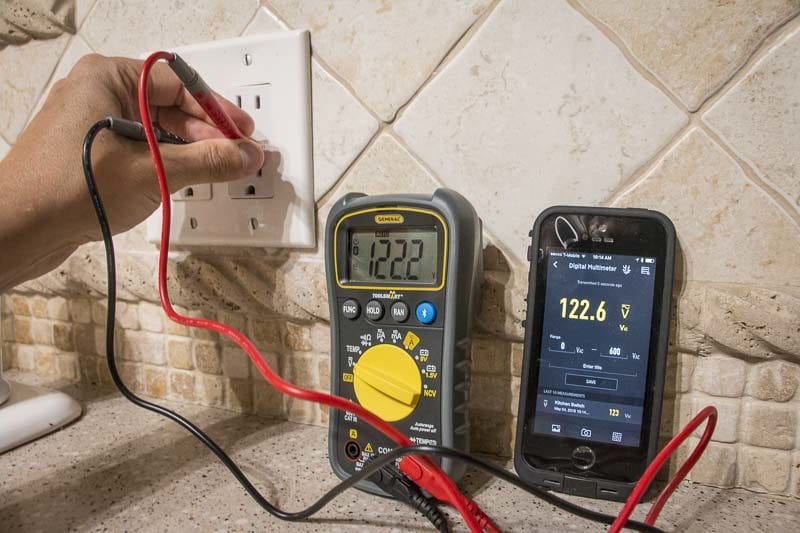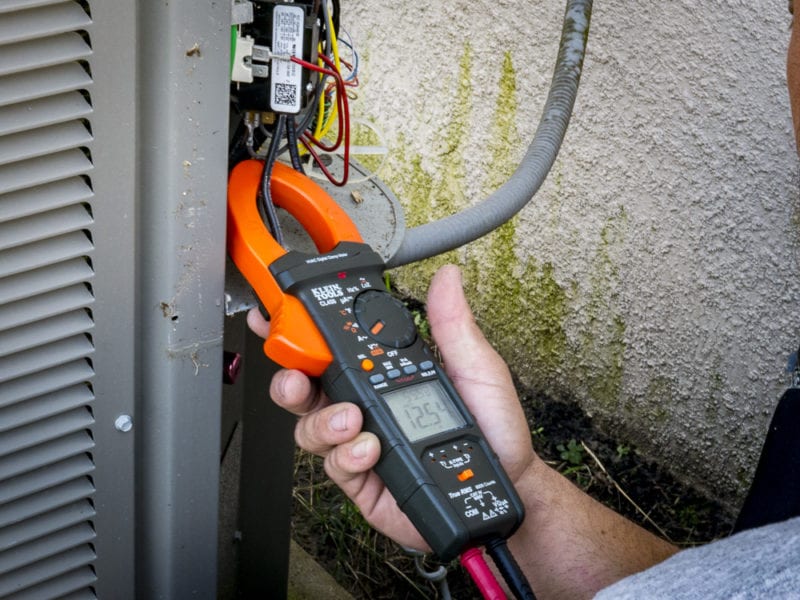Not every seemingly broken appliance requires a service call. The most common problems with household appliances are mechanical in nature. You may have a broken or worn-out component (such as a switch or motor). A loose wire or a bad connection can also cause easily-fixable problems. If they want to, any homeowner can learn how to troubleshoot and fix electrical problems with home appliances. Read on for some easy troubleshooting tips!
Editor’s Note: As with any advice you follow online, we do not claim ultimate authority. Please turn off breakers and verify power is off with either a non-contact voltage tester and/or multimeter before working on any electrical wires. Please take all safety precautions against electrical shock, and/or consult a professional if you don’t understand something you’re doing. Electricity is not to be trifled with! You also want to make sure you stay in compliance with all local and national building and electrical codes.
What are the Basic Tools You Need to Troubleshoot Home Appliances?
Most home appliances take AC voltage, supplied to your house from the utility company and use it to make heat, light, turn a motor, or all three at the same time. But when the appliance stops functioning, a logical approach to troubleshooting comes in handy. Fixing electrical problems and even tracing circuit breakers involves the use of basic tools.
You can, for example, check for proper voltage at each circuit component and even the condition of components and connections using functions found on tools like an Amprobe multimeter. It helps to be equipped to troubleshoot electrical problems. To make this less painful, you should have the following tools:
- NCV – non-contact voltage detector (determines if power is flowing to a circuit to keep you safe)
- Digital multimeter (measures AC and DC voltage as well as continuity—whether you have a break in a wire)
- Screwdrivers (Phillips and flat head)
- Basic wire strippers
- Clamp meter (checks current draw—this is for more advanced troubleshooting and repairs)
How to Fix Electrical Problems Step by Step
Here is a recommended step-by-step troubleshooting method you can use to isolate and fix electrical problems near any home appliance problems using just a digital multimeter (DMM) and some basic tools:
1. Check the AC Supply Voltage
Believe it or not, some problems start at the source. Always ensure you have the proper AC voltage coming to an outlet or power supply.
To measure the AC supply voltage at a receptacle, first set the DMM (digital multimeter) function switch to Volts AC (VAC). If required, select a range greater than the voltage you expect to measure (greater than 120 volts). An auto-ranging meter automatically selects the most appropriate range for you. Next, connect the test leads (red and black) to the Voltage (V) and Common (C) ports on the meter.
The red multimeter probe tests the “hot” line and the black tests neutral or ground. Carefully, insert the red probe of the meter into the “hot” slot of the receptacle. This is typically the “short” or smaller slot. The black probe goes into the other vertical slot of the receptacle or the Ground slot.
The meter should read between 116 and 124 volts. The power cord from the appliance usually terminates with three wires: black, white, and green. Black (or less commonly, red) is usually the “hot” wire, white is “neutral”, and the green wire should be ground.
You should also read almost no voltage between Neutral (long slot) and the Ground hole.

Troubleshooting Low or No Voltage
If you measure no voltage at the outlet, check to make sure the circuit breaker or switch controlling the receptacle is ON. Also, make sure the probes are sufficiently inserted into the receptacle. You may need to angle them or move them around to be sure. If you DO detect voltage at the receptacle, you could have a problem in the power cord. That will be your next test.
If, however, you measure a voltage that’s much lower than the expected ~120V, you may have a problem with a disconnected neutral (white) wire. Since, most of the time, wires don’t “break in the middle” you might want to check to see if a neutral (white) wire corroded or came disconnected at an outlet or switch on the same circuit. Be sure to shut off the power before searching for broken neutral wires.
2. Check the Power Cord
Over time, and sometimes through accidents or flexing, the internal conductor in the power cord can break while appearing perfectly normal on the outside. To check a power cord, first, disconnect it from the outlet. For this next part, you will need to gain access to the internal connections on your appliance. Never test any wires on an appliance still connected to an outlet!
Set your multimeter to the resistance or “Ohms” function and measure the resistance between each prong of the plug and the point where the power cord connects to the appliance. The flat, narrow blade on the plug should be connected to the black wire. The flat, wide blade goes to the white wire. The round pin connects to the green wire.
A good power cord will have less than one ohm of resistance from the plug to the end of each wire. Anything higher than one ohm may indicate a cord that is starting to break down and could become overheated when in use. Replace the entire power cord if any wire shows high resistance or “OL” is displayed on the meter.
3. Check the Current Draw – Advanced Users
Sometimes a low or high current draw indicates a motor problem. It can alert you to how to fix electrical problems when systems don’t operate as they should. Current draw is measured by using a clamp accessory attached to your multimeter, or by using a clamp meter. If you don’t know what this looks like, check out our Amprobe clamp meter review.

To make a current measurement, either connect the clamp accessory or grab the clamp meter. Accessories connect to the current jack and common jack of the multimeter. Clamp the jaw around one conductor (wire) of the circuit to be measured. Typically you can find the power cable split out at the appliance side, but please be careful or hire an electrician if you don’t fully understand the risks here. Be careful not to clamp the jaw around both conductors, this will cancel the signal, showing zero current.
Tech Note: The current clamp acts as a step-down transformer, taking the higher current consumed by the appliance and transferring it to a much smaller current (usually 1000 to 1) which the digital multimeter can handle.
To make a current measurement with a clamp meter, select the AC current function and clamp the jaws around one conductor. The display will show the current being measured. What you are doing here is making sure the appliance is actually drawing current in the first place. An appliance that isn’t working may simply not draw any electricity because it has a problem somewhere else and is failing internally.
Check out the Klein Tools CL800 AC/DC clamp meter – Buy Now ($129.97)
4. Checking Switches
You can quickly troubleshoot electrical problems by checking onboard switches on small appliances. Make sure power is flowing through them and getting to its proper destination. You can verify this in a couple of ways. With the appliance plugged in, you can check both the input side and output side of the switch for voltage.
With the probe leads plugged into the Volts and Common inputs set the meter to the Voltage AC (VAC) mode. Touch the black probe to ground (the metal frame of the appliance) or to the neutral connector on the power cord (the white wire). Carefully touch the red probe to the connectors on the switch, first one side, then the other. With the switch in the “ON” position, the voltage should be present on both input and output lugs.
Bonus Step: Checking Continuity
Another way is to check the continuity through the switch. For this test, remove power from the switch first by unplugging the appliance.
Next, isolate the switch by removing the wire or wires from one side of the switch.
Then, set the multimeter to the Continuity function and place one lead on the input lug of the switch and the other lead on the output lug of the switch. When the switch is on, the multimeter should sound the audible continuity signal and read about zero ohms. With the switch in the off position, the audible tone should stop and the meter will display “OL.” If it doesn’t, you have found your problem: a defective switch.
What’s Next?
Fixing electrical problems in home appliances may seem daunting. If, however, the problem is just a loose cable or a bad switch, why pay hundreds of dollars for a simple solution? Many electrical problems have been solved easily and quickly by homeowners willing to take a few minutes to do some basic troubleshooting.
Hopefully, this guide was helpful—we love passing on tips from our electrician Pros which may be helpful to other Pros who don’t work in that field. If this helped you, or you have additional troubleshooting steps you’d suggest we add here, please leave a comment below!



